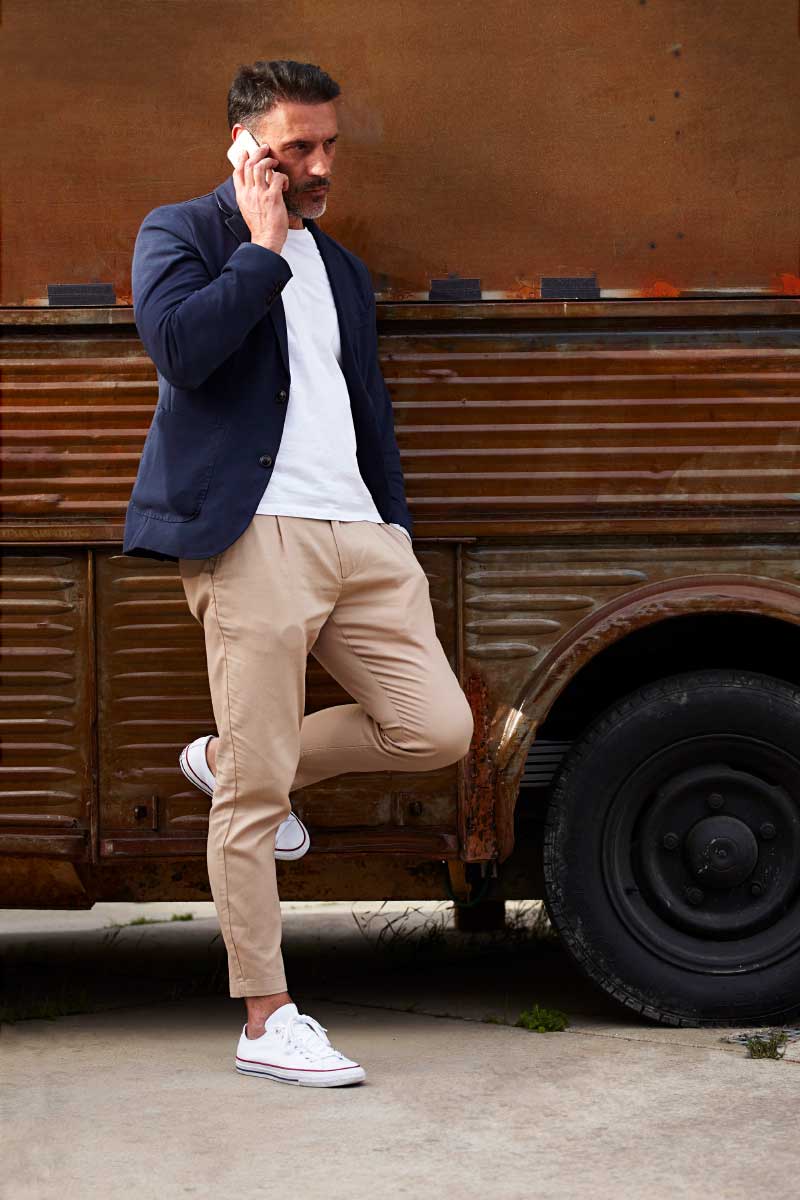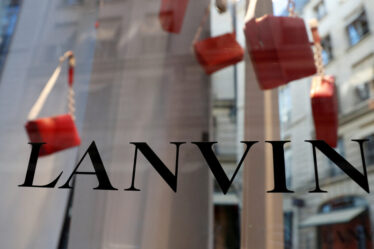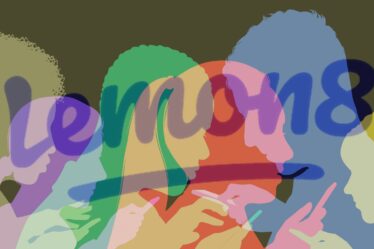
Introducing a professional yet relaxed style of dressing for men in the corporate world, business casual attire has seen significant growth in recent years. This shift towards more comfortable and stylish looks can be traced back to Aloha Fridays during the 1960s.
Whether you’re looking to dress up smarter for work or find out what makes up this modern corporate dress code, this article is here to help! From essential pieces that make up the perfect wardrobe to understanding how it differs from traditional business clothing, get ready as we dive into
The History and Evolution of Business Casual Attire for Men
The 1990s saw the beginnings of the business casual trend, with Alcoa and other companies introducing more relaxed dress codes in their corporate environments.
Aloha Fridays and the origins of casual dress
In 1966, the Hawaiian garment industry introduced ‘Casual Friday’ or ‘Aloha Friday’ to support their businesses and encourage locals and visitors alike to dress more casually.
Targeted at selling more shirts, this initiative quickly became an integral part of corporate culture in Hawaii. Through Casual Friday came a new trend of professional workplace attire that allowed for comfort while meeting professionalism expectations.
Dockers® is often credited with popularizing this wave of casual dress through its khakis-focused campaigns long before other brands ventured into the field.
The state of Hawaii also played an essential role in influencing business casual attire through its thriving garment sector and unique cultural influence—in particular, many associate the patterned designs typically found on Hawaiian shirts with chill days at work without compromising any level of professional appearance.
The influence of Dockers and khakis in the workplace
Dockers revolutionized the workplace attire of men, playing a significant role in transitioning from suit-and-tie to business casual dress. The concept of Casual Fridays was created by Dockers in 1986 as an experiment aimed at introducing an alternate dressed-down style while infusing personal flair into business wear.
This campaign became an instant hit, and within a few years, it changed how people dress for work. Before this, pantsuits and slacks were prevalent; however, following the success of
Docked khakis mentioned items started to fade out together with their conservative look.
Khaki trousers are now accepted universally across all organizations as business attire for men popularizing the idea that comfort is part of fashion associated with professionalism.
Understanding the Business Casual Dress Code
Requires knowledge of the expectations and acceptance levels associated with it, as they can vary among industries and organizations.
Different Interpretations and tolerance levels in diverse workplaces
How the business casual dress code is interpreted and put into practice can differ depending on the industry, the culture of the company, and personal preferences. For instance, a tech startup may have more relaxed standards than a law firm or banking institution.
The differences in understanding each organization’s policies regarding attire depend on how willing employees are to conform or challenge conformity. Sometimes, slight deviations from the set guidelines, such as wearing non-traditional pieces, including sneakers with slacks, may be tolerated. At the same time, other companies can strongly discourage any attempt at being different.
Employers must let their workers know what is expected regarding workplace attire while considering employee morale and maintaining a professional image through appropriate dress codes for specific meetings or events.
Defining the critical elements of business casual
Business casual attire blends elements of traditional business wear with a more relaxed style. It is a less formal dress code than professional attire such as suits, allowing for a more flexible approach to dressing.
Clothing often includes sports coats or casual blazers for men and collared or button-down shirts. Casual slacks, including khakis or dress pants, are acceptable as part of men’s business casual attire, while jeans should be avoided when adhering to this dress code.
For women, appropriate options include blouses, sweaters, and even tailored dresses but shorts and short skirts above the knee are not considered suitable in most workplaces.
Essential Pieces for a Business Casual Wardrobe
A business casual wardrobe typically comprises blazers, men’s quarter zips, dress pants or khakis, and appropriate shoes and accessories.
Blazers and jackets
Elevate the style and professionalism of a man’s business casual attire by adding blazers or jackets. Suits are often too formal for modern, laid-back workplaces. Still, blazers and jackets come in more relaxed styles such as unstructured, nubby, or knitted versions making them the perfect stylish outerwear for both professional and fashionable settings.
Navy blue is revered as the go-to color choice of many men’s wear aficionados when selecting a sophisticated business casual look. Jackets can be coupled with chino trousers or dress slacks, providing an easy way to dress up jeans without compromising on being smartly dressed for work engagements.
Blazers and jackets offer versatility in styling, allowing you to quickly transition from day wear into nightwear. An impressive range of accessories can also be paired with business casual attire, including reversible belts, patterned socks, and pocket squares, giving extra flair to men’s ensembles while still keeping things subdued yet polished enough for even the most stringent dress codes.
Quarter Zips and Pullovers
Menswear has seen a considerable revolution over the past two decades, with the shift toward business casual attire for men leading the way. The versatile quarter zip sweater is no different, providing a perfect professional style and comfort blend.
This classic piece can be styled in almost any way imaginable – pairing them with chinos or jeans will give you that smart-casual look, or combining them with dress pants can also create an incredibly stylish presentation suited to corporate and formal settings.
Quarter zips are also incredibly lightweight garments, making them ideal in climates where temperatures vary drastically between indoor air-conditioning and outdoor weather conditions.
Pullovers are another staple business casual item for men – they offer comfort without compromising a professional appearance. They’re perfect for layering up in colder months yet provide enough insulation to keep wearers cool when temperatures rise during summer days.
Pants and trousers
These are essential for creating a successful business casual look for men. Everyday workplace-appropriate trousers include khakis, slacks, and tailored wool trousers, all of which can be found with various materials such as cotton, polyester, or linen blends in different colors such as navy blue or charcoal grey.
All pants should fit well at the waist and taper near the end to create flattering lines – pleated front styles are often an excellent choice for added definition. An unconstructed blazer is ideal for the look, while loafers or brogues work perfectly with dressier trousers for more formal corporate affairs.
Knowing your workplace’s tolerance around dressing professionally will help you decide what other items you may wish to incorporate, such as pinstripe trousers that give off a sharply professional appearance without appearing overly formal.
Shoes and accessories
When choosing a business casual look, paying attention to the type of shoes and accessories worn is essential. Leather loafers, Oxfords, Derbies, and Brogues, are all appropriate choices for achieving a stylish yet professional look in the office.
Additionally, dress slacks or chinos paired with a button-down shirt can be dressed with classic options such as dark socks, dress shoes, sports coats, or blazers for added sophistication.
Business casual clothing for men helps create an ensemble that conveys professionalism yet allows one to express their style simultaneously. To add a bit of polish to your look, consider introducing accessories such as colorful ties or cufflinks, which ultimately tie the entire outfit together perfectly.
Conclusion
The rise of business casual attire for men has been an undeniable trend in modern workplaces. Driven by the desire for greater comfort and flexibility, this dress code allows individuals to appear professional while expressing their style.
Popularized by Dockers in the 1980s and Alcoa’s relaxed corporate policy, business casual has become a norm in many industries. From professionals working remotely to executives attending meetings or networking events, selecting from essential wardrobe staples such as Blazers & quarter zips is critical to acing that sophisticated yet comfortable ensemble suitable for any occasion.
By promoting what it means to be professionally dressed yet comfortably styled simultaneously, business-casual provides an ideal balance between formality and fashionability regarding our clothing choices – ensuring we always look smart without compromising our feelings.



